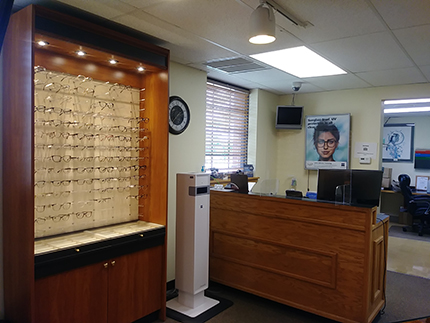Electrodiagnostics Clinic
The electrodiagnostics clinic uses sensitive electrodes in or around the eye to measure the electrical output of the visual system. The purpose of these specialized tests is to provide an objective, functional assessment of the health of different parts of the visual system including the retina, optic nerve, and visual pathways in the brain. Patients seen in the electrodiagnostics clinic are referred in from our other clinic sites or from outside clinics in Oklahoma as well as surrounding states. Our students are trained to perform and interpret the following tests:
- Electroretinogram (ERG) - Tests the average photoreceptor function across the full retina
- Pattern Electroretinogram (pERG) – Tests the retinal ganglion cells
- Multifocal Electroretinogram (mfERG) – Tests focal photoreceptor function in the central retina
- Visually Evoked Potential (VEP) – Tests the transmission of a visual signal from the retina to the visual center of the brain
- Electro-oculogram (EOG) – Tests the function of the retinal pigment epithelium



Meet the Clinic Chief:
Neal Whittle, O.D.
Associate Professor
whittle@nsuok.edu
918-444-4151
Profile

